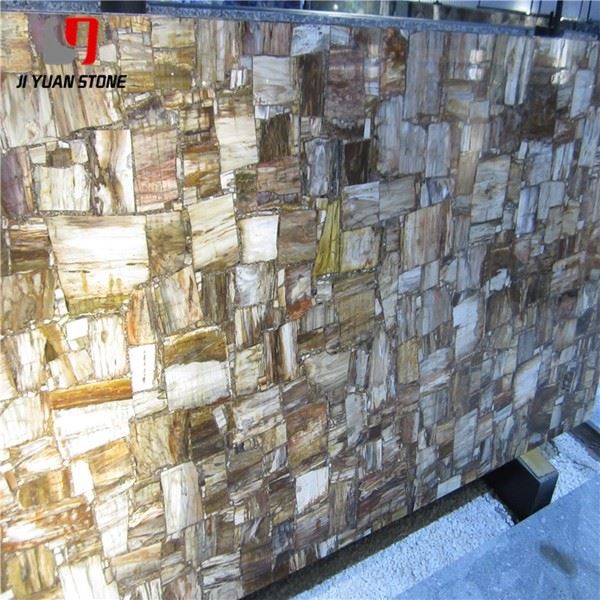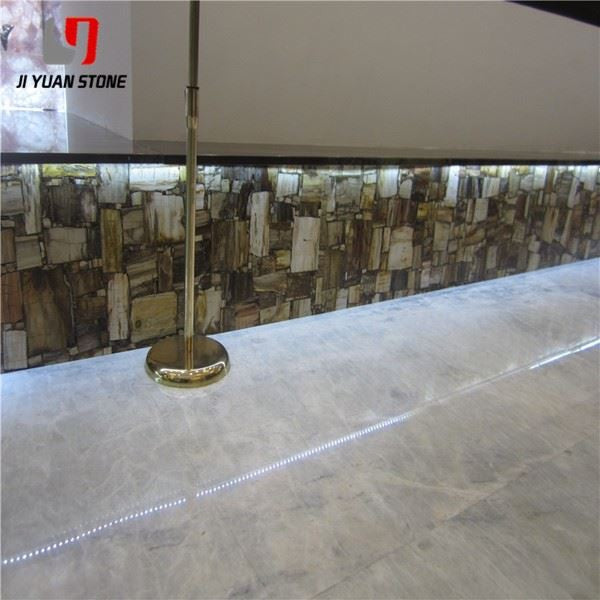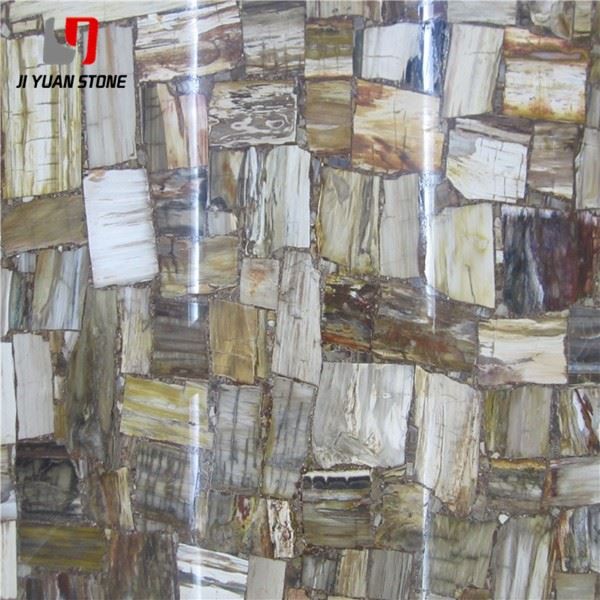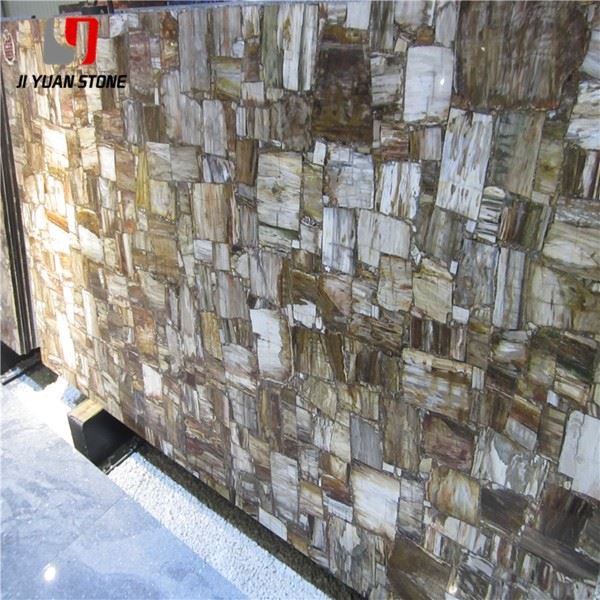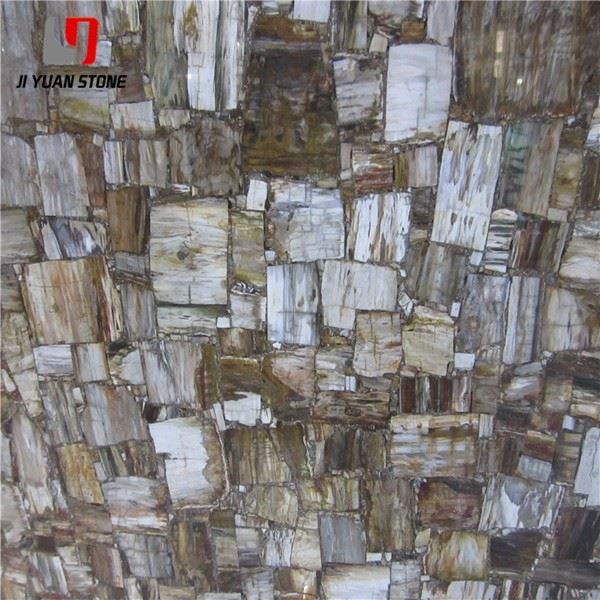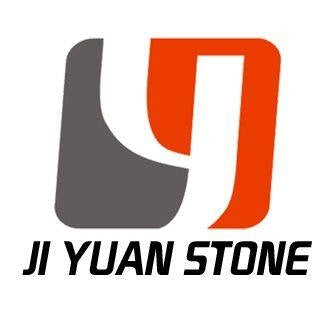Petrified Wood Fossil Tile
Petrified Wood Fossil Tile
Add a unique touch to your home with our Petrified Wood Fossil Tile. Crafted from ancient wood that has turned to stone over millions of years, this tile offers a one-of-a-kind natural beauty. With its durable and long-lasting material, it's the perfect addition to any space.
| Feature | Details |
|---|---|
| Material | Petrified Wood Fossil Tile |
| Surface finished | Polished,honed or customized |
| Finished Products | Floor Tiles, Wall Cladding, Countertops, Windowsills, Special-Shaped Tiles, Small Slabs, Swimming Pool, Steps, Wall Panel, Flooring, Veneers, Slabs, Coping Tiles etc |
| Color | Yellow,Black,White,Red,Purple Wood,Green,Grey,Pink,Rainbow,Pink,Tiger Eye etc |
| Slab Size | 1800upx600mm ; 1800upx650mm ; 1800upx700mm etc 2400upx600mm ; 2400upx650mm ; 2400upx700mm etc |
| Tile sizes | 12"x12"(305X305 or 300X300);24"X12"(610X305 or 600X300);24"x24"(610X610 or 600X600);18"X18" (457X457);400*400;800*800 ;customized |
| Thickness | 10mm; 12mm; 15mm; 18mm; 20mm; 25mm; 30mm; 35mm; 40mm; 45mm; 50mm; customized |
| Application | For building decoration, like interior floor, stair railing, service counter, window sill, and wall, etc. |
| Sample order | Available |
| OEM | Available |
| Supplyability | 10000 sq.m./month |
| Place of Origin | China(Mainland) |
| Water absorption rate | <0.5% |
The Future and Value of Petrified Wood Fossil Tile
Petrified wood, also known as tree jade, is an incredibly rare and valuable resource. Reports suggest that the price of ordinary fossil wood collections can exceed one million yuan. This rarity is comparable to diamonds, gold, and Hetian jade, with fossil wood reserves being just a fraction of the precious materials like diamonds or Hetian jade.
As people gain a deeper understanding of the rarity of tree jade, its value has gradually risen. For example, domestic tree jade, especially from the northern regions, is highly prized for its excellent color and water quality, with prices ranging from thousands to tens of thousands of yuan for a 10-kilogram piece. In contrast, Xinjiang tree jade sells for between 8 to 20 yuan per kilogram due to its lower quality, brittleness, and larger stock. However, as the reserves of Muhua stone become increasingly scarce, the price of fossil wood is expected to rise substantially in the future.
Fossil wood is a tree fossil formed through a natural process in which the woody parts of trees exchange with silicon dioxide (SiO₂) in groundwater after the trees—at least hundreds of millions of years old—are buried underground. This geological transformation preserves the wood’s structure and texture. The fossil wood can come in a variety of colors, including natural yellow, light yellow, yellow-brown, red-brown, gray-white, and gray-black. The polished surface can be vitreous, opaque, or slightly transparent.
Fossil wood is sometimes referred to as silicified wood or tree jade, as its texture can resemble that of jade. The process that forms fossil wood occurs when ancient trees are buried underground due to geological events such as volcanic eruptions or crustal movements. In an environment that is water-deficient or isolated from the air, the wood does not rot. Instead, it undergoes a transformation where silicon-calcium-containing substances replace the wood during a long geological period.
This natural transformation retains the fibrous structure and shape of the tree, turning it into petrified wood. The conditions required for this preservation are incredibly rare, as the tree must be quickly buried to protect it from rot. This rapid burial, combined with an isolated environment, is what makes the formation of fossil wood rare.
When the trees are buried in sediment, groundwater solutions rich in siliceous components dissolve the tree’s original components and replace them with silicate materials. This phenomenon is known as material exchange and substitution. If the rates of dissolution and alternation are balanced, fine structures like growth rings and cell outlines can be preserved. However, if dissolution occurs faster than alternation, only the tree’s shape remains, with its annual rings becoming unclear. Ultimately, the original organic components are replaced entirely by silicate material.
Through processes such as compaction, consolidation, and diagenesis, the fossilized trees are transformed into hard stone and wood fossils. Fossil wood, due to these specific geological conditions, is an incredibly rare and valuable commodity. The image below shows a piece of petrified wood fossil tile that I had the fortune of seeing firsthand.
Share

